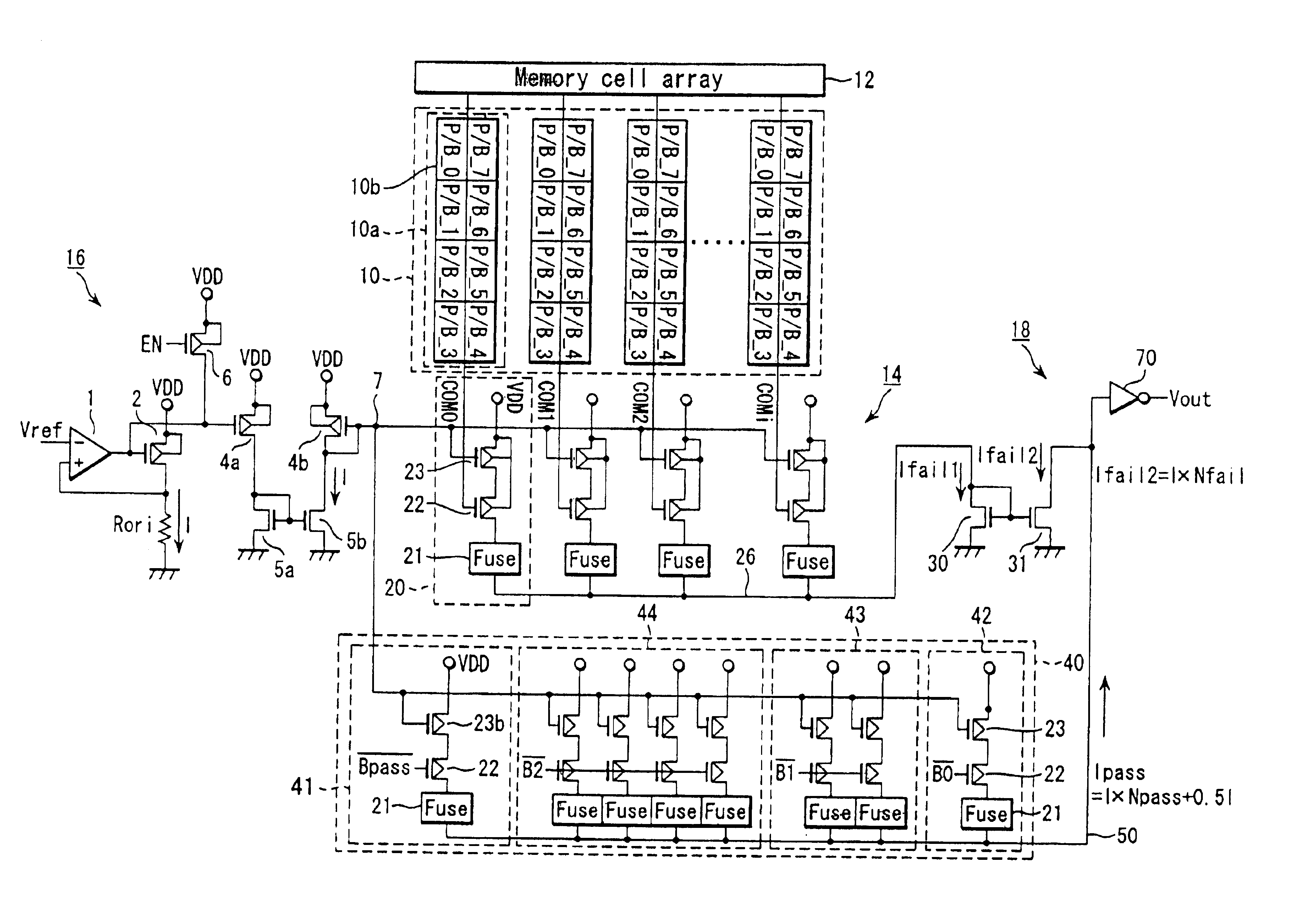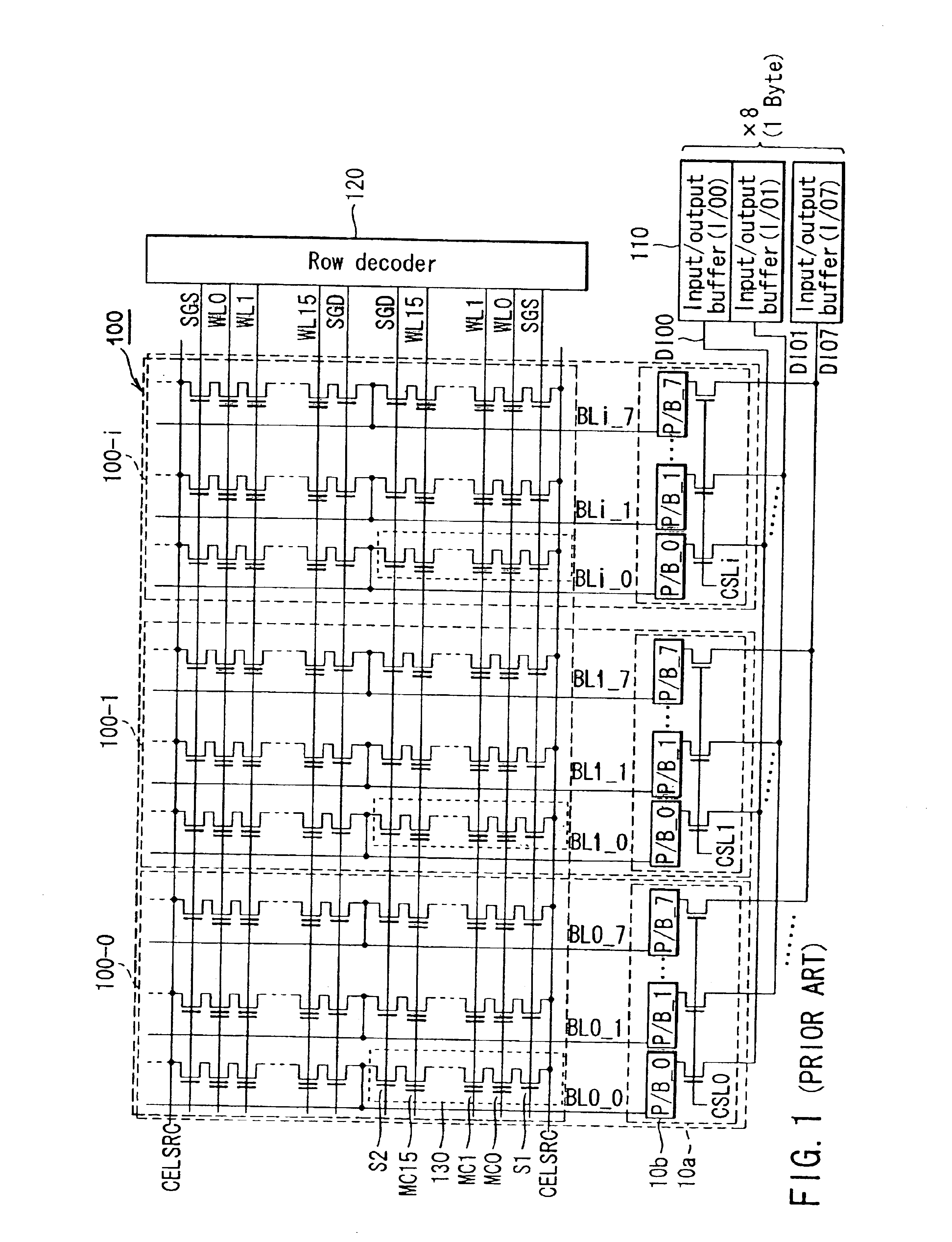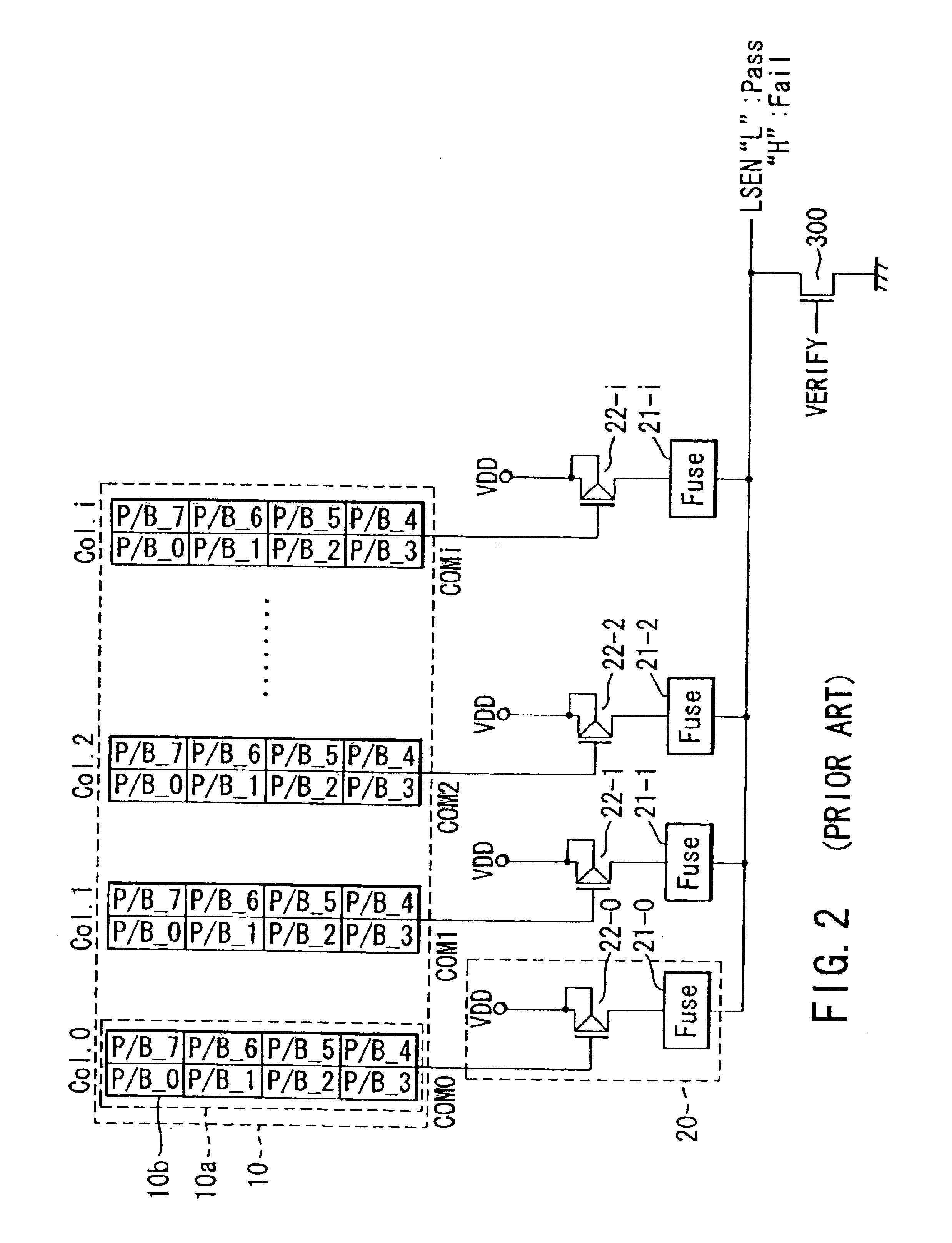Fail number detecting circuit of flash memory
a technology of failure number and detection circuit, which is applied in the field of semiconductor memory devices, can solve the problems of long acquisition time, long time consumption, and failure data that fails continuously in defective column sections
- Summary
- Abstract
- Description
- Claims
- Application Information
AI Technical Summary
Benefits of technology
Problems solved by technology
Method used
Image
Examples
second embodiment
[Second Embodiment]
In the first embodiment described above, a case wherein the number of columns each containing fail data or a register (page buffer) P / B having “1” data on the node n2 of the latch circuit is detected is explained, but if the register group 10a of each column is replaced by a circuit having a configuration as shown in FIG. 9, the number of fail data items or registers P / B each having “1” data on the node n2 of the latch circuit can be detected irrespective of the column unit.
That is, in the circuit shown in FIG. 9, different signals VFY0 to VFY7 are supplied to the gates of NMOS transistors 29 of the respective registers 10b.
Next, the operation of the circuit shown in FIG. 9 is explained with reference to FIGS. 10A, 10B and 11. In FIGS. 10A and 10B, numerals in the P / B group 10a of each column express data items (“1” indicates “fail” and “0” indicates “pass”) which the registers P / B_0 to P / B_7 hold.
First, as shown in FIG. 10A, the signal VFY0 is set to the “H” lev...
first embodiment
The first embodiment relates to the column redundancy, but the second embodiment relates to an error code correction function (ECC). That is, it is assumed that program fails of several bits can be permitted by the ability of the error code correction function of the system using the semiconductor memory. If verify fails of several bits are permitted in the program operation, an operation which detects the number of thus failed bits is effective and can be performed at higher speed in comparison with the conventional case.
third embodiment
[Third Embodiment]
FIG. 12 illustrates a semiconductor memory device according to a third embodiment of this invention and shows a modification of the construction of the circuit shown in FIG. 3. In FIG. 12, portions which are the same as those of FIG. 3 are denoted by the same reference numerals and the detail explanation thereof is omitted.
In the first embodiment shown in FIG. 3, the constant current flowing in each of the columns is determined by the PMOS transistor 23, but in the third embodiment shown in FIG. 12, it is determined by use of an NMOS transistor 23c.
A portion which determines the current I is the same as in the circuit portion of FIG. 3, but a current of 0.5I is generated by use of a PMOS transistor 4c and the gate potential of a diode-connected NMOS transistor 5c is input to a permissible fail number setting circuit 40. Further, the construction is made to cause a current I to flow in a PMOS transistor 4d and cause the current I to flow in a current passage circui...
PUM
 Login to View More
Login to View More Abstract
Description
Claims
Application Information
 Login to View More
Login to View More - R&D
- Intellectual Property
- Life Sciences
- Materials
- Tech Scout
- Unparalleled Data Quality
- Higher Quality Content
- 60% Fewer Hallucinations
Browse by: Latest US Patents, China's latest patents, Technical Efficacy Thesaurus, Application Domain, Technology Topic, Popular Technical Reports.
© 2025 PatSnap. All rights reserved.Legal|Privacy policy|Modern Slavery Act Transparency Statement|Sitemap|About US| Contact US: help@patsnap.com



